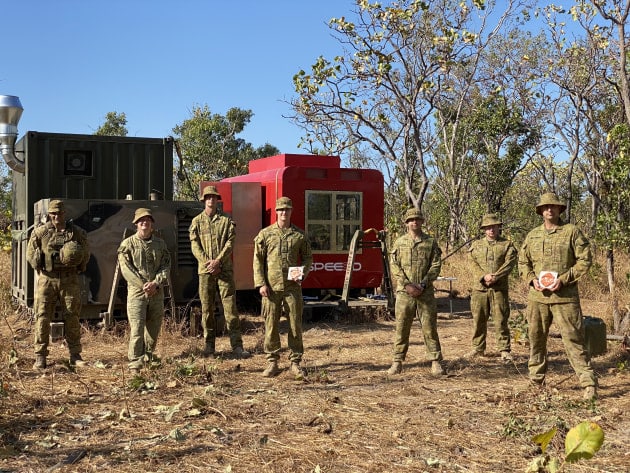Worldwide, the “WarpSPEE3D” 3D metal printer has been rapidly deployed and adjusted by the Australian Army in field exercises in the Territory. This successful test demonstrates the potential of ADF to deploy metal 3D printing technology to the field.
WarpSPEE3D is the world’s first large-format metal 3D printer using patented cold spray technology. Compared with traditional manufacturing, this technology can produce metal parts significantly faster and more cost-effectively. Developed by SPEE3D, this printer is capable of printing large metal parts weighing up to 40kg at a record speed of 100 grams per minute.
The printer arrived in Darwin in early June. Within a week after the soldiers of the 1st Combat Service Support Battalion (1 CSSB) were installed at the Robertson Barracks, they packed up their bags, transported the printer out of the bushes, and participated in a three-day test conducted at the field training area in Bundi Mountain.
During the three-day trial period, WarpSPEE3D was manipulated to different bush locations and unloaded on different terrain. The printer can be unloaded and put into use within 30 minutes, and printing can be performed, and the printer can produce various parts.
SPEE3D printers use metal cold spray technology to produce industrial-grade metal parts in just minutes instead of days or weeks. The process uses kinetic energy instead of high-power lasers and expensive gases.
The Army announced in February 2020 a US$1.5 million investment in the SPEE3D technology pilot, a 12-month trial designed to test the feasibility of deploying 3D metal printers at bases and sites. SPEE3D has collaborated with the Advanced Manufacturing Alliance (AMA) and Charles Darwin University (CDU) to implement the plan in February with soldiers of the Australian Army’s First Brigade 3D printing at CDU.
Compared with what the conventional supply chain can provide, the plan aims to significantly increase the availability of the Army’s unique parts.
“The first field deployment of WarpSPEE3D was an important milestone for SPEE3D,” SPEE3D CEO, Byron Kennedy said. “While our equipment was initially designed for industrial use, this trial proved that our equipment is actually very robust and can endure harsh conditions and rough handling very well. We look forward to future exercises and continuing to learn how we best serve the Australian Army and defence industry.”
A CSSB commander, Lieutenant Colonel Kane Wright, agreed that the one-year trial was proceeding smoothly, taking into account training adjustments.
”This phase has seen the 3D printing capability deployed to the field, alongside vital military equipment, contributing to the mission during this training cycle,” Lieutenant Colonel Wright said.
“The ability to print repair parts in an environment like this has the potential to significantly reduce our footprint and repair damaged equipment – on the spot – to get us back to our main priority.”

